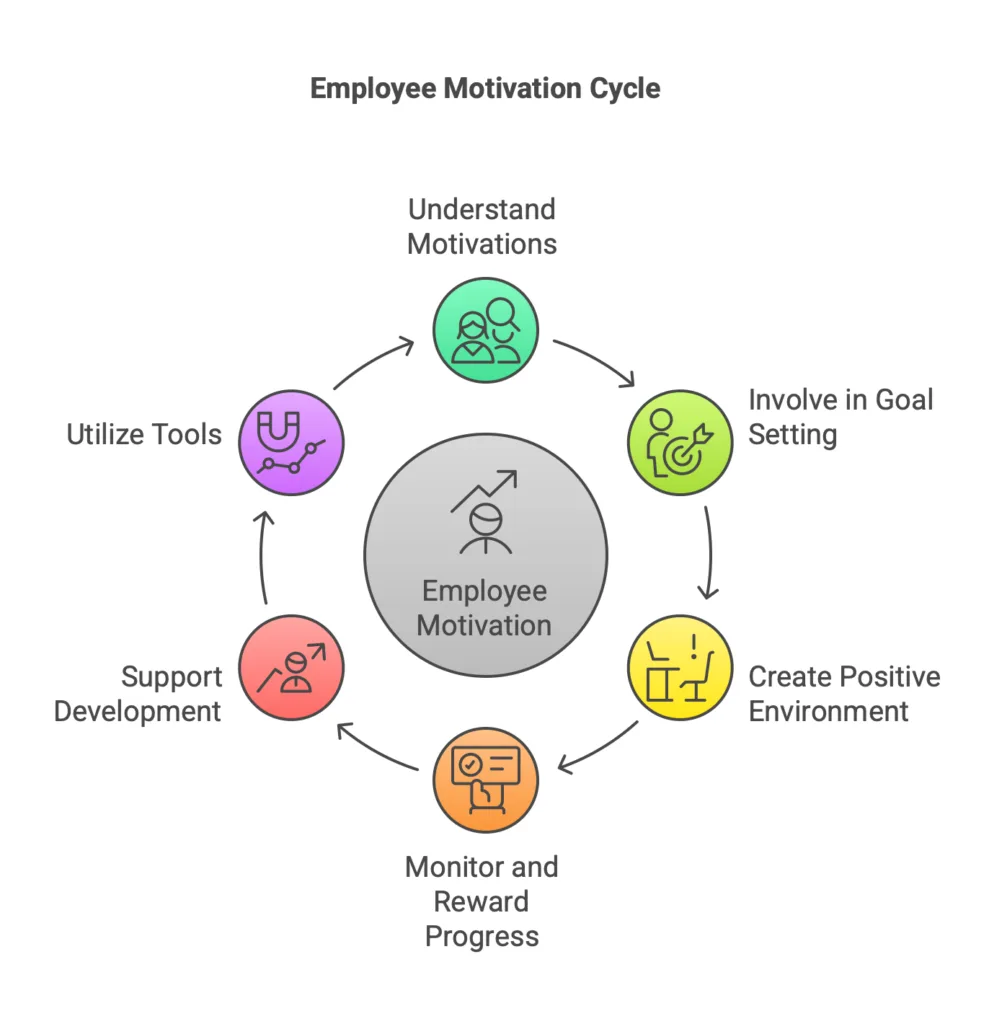Lasting change requires motivation
In this fourth article on change management in contact centers, we explore concrete methods to enhance employee motivation and participation, supporting behavioral changes and delivering lasting results in a contact center environment. If you wish, you can download the entire article series in advance through the form at the end of the article.
1. Understand What Motivates Employees
Not all employees are motivated by the same things. For some, career development may be a priority; for others, flexible working hours or recognition for a job well done might be more important.
Practical Tips:
- Talk and Listen: Hold regular discussions to understand what motivates each employee. These could be part of weekly meetings or individual coaching sessions.
- Tailor Motivation Strategies: For example, if an employee values learning, offer training opportunities. If flexibility is a priority, allow them to influence their working hours.
- Diverse Incentives: Use both monetary rewards (bonuses, prizes) and non-monetary incentives (thank-you notes, recognition).
2. Involve Employees in Goal Setting and Implementation
Employees are more committed to goals when they feel their voices are heard and their opinions matter.
Practical Tips:
- Allow Input: Ask employees for their opinions when setting goals or designing new processes. Example: “How could we improve response times in customer service together?”
- Team Meetings: Use team meetings as opportunities for employees to share their ideas and insights.
- Small Groups and Projects: Give employees responsibility for small projects, such as testing new processes. This fosters a sense of ownership.
3. Create a Positive Work Environment
A motivated and engaged team needs a work environment where they feel valued and safe.
Practical Tips:
- Acknowledge and Appreciate: Positive feedback motivates more than many realize. Recognize successes, big or small. Example: “Great job resolving that case; it’s exactly the kind of customer focus we’re aiming for!”
- Build Community: Organize informal events such as coffee breaks or theme days to bring the team together.
- Foster Psychological Safety: Encourage open discussions where everyone can share ideas without fear of negative consequences.
4. Monitoring and Rewarding Progress
Motivation is maintained when employees see tangible results and feel their contributions are valued.
Practical Tips:
- Track Progress: Use tools like QualityDesk to provide real-time performance data. This helps identify successes and areas for improvement early on.
- Reward Achievements: Use team-level and individual rewards. Example: A team that meets its sales targets could be rewarded with a group lunch or movie night. Individual rewards could include bonuses or personalized gifts.
5. Supporting Development and Career Opportunities
The opportunity to grow and advance in a career is a significant motivator for many employees.
Practical Tips:
- Offer Coaching and Training: Use regular coaching sessions to develop employees’ skills. Utilize external training programs as well.
- Clear Career Paths: Show employees how they can progress within the organization, such as moving from customer service roles to team leader positions.
- Focus on Strengths: Highlight individual strengths during coaching and help employees fully utilize them.
6. The Role of Tools in Motivation and Engagement
Technology plays a significant role in supporting employee motivation and engagement. Tools like QualityDesk offer valuable support in the following ways:
- Transparency: Employees can see their own and the team’s performance in real-time, helping them understand their impact on the bigger picture.
- Real-Time Feedback: Tools enable prompt and precise feedback, encouraging immediate improvements.
- Collaboration: Applications facilitate teamwork and make goals and rewards more visible to the entire team.

Conclusion
Motivation and participation are not merely “nice to have” elements of an organization but prerequisites for achieving long-lasting and sustainable results in a contact center environment. When employees feel valued, heard, and part of the team, they give their best to improve the customer experience.
The next part of the article series is now available to read through this link: How to Create a Success-Oriented Work Environment in a Contact Center




